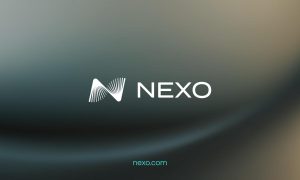The explosive development of the decentralized environment has resulted in the boom of one of its main sectors that caters to the financial aspect of interactions and competition between the digital and traditional economies. The DeFi market has rapidly evolved to offer a host of financial instruments for its users in disrupting traditional counterparts, and offers a slew of opportunities for generating income at relatively low risks with high returns. With the overall capitalization of the DeFi market attaining a value of over $100 billion, the prospects for its further development seem bright.
Among the more unique and demanded instruments on offer on the DeFi market are flash loans that are becoming a direct opposition to the main products of traditional financial institutions. The reason is largely, because digital asset backed flash loans overcome the principal challenges of common credit and loans – the risk of loaner default and illiquidity – both of which often result in obligation infraction.
Flash loans were developed to reduce both risks by providing credit lines for a single transaction at almost unlimited volumes for short amounts of time with the sole condition being the return of at least the full amount of the loan. In the decentralized environment, the smart contracts of the underlying blockchain infrastructure ensure the immutability and fulfillment of the transaction. Lending platforms typically act as intermediaries for the parties of the flash loans and ensure repayment with arbitrageurs acting as the balancers.
Flash lending market is already exceeding $100 M monthly and most known use cases for flash loans are arbitrage, portfolio rebalancing, liquidations and collateral swapping.
The problem currently impeding the development of the flash loans market to its full potential is the abundance and incompleteness of lending platforms, which confuses users. Most market players offer flash loans as part of their overall service without any tailored instruments that would make them wholesome providers.
Among the most prominent decentralized lending platforms currently operating on the market is AAVE, which launched its first mainnet as ETHlend in 2017 – the first lending protocol in DeFi space. AAVE operates on the Ethereum blockchain and has a fixed interest rate with support for just 24 assets.
Another player is KeeperDAO – an online liquidity provider protocol. Flash loans act more as a secondary service on KeeperDAO with merely 5 supported assets, though users can benefit from a rather high interest rate of 6.7% for ETH, for instance.
DYDX is another decentralized exchange that currently supports perpetual, margin and spot trading, as well as lending and borrowing. The platform runs on the Ethereum blockchain and allows users to trade on a peer-to-peer basis with all participants acting as part of a global loan pool.
One of the more rapidly growing platforms is Uniswap – an Ethereum-based decentralized exchange that bundles tokens into smart contracts, creating liquidity pools. Being secondary services on Uniswap, flash loans are dubbed as Flash Swaps and can be made with any ERC-20 tokens at a fixed transaction fee of 0.3%.
Though still under development, the only service on the DeFi market to date that is focused exclusively on flash loans is Equalizer – an multi-chain based platform, which allows users to make use of tokens on any blockchain in unlimited volumes. Featuring dynamic, market-based fees, Equalizer is the only platform that offers incentives for long-term liquidity providers by providing them with rewards based on the duration of provision of funds, thus ensuring the availability of liquidity.
Since on-chain governance is a key element of decentralization by granting token holders the ability to influence changes in the system in question, Equalizer, AAVE, and KeeperDao are relying on such a model to allow their users to tune the platforms and generate more profit, eventually increasing the valuation of the native platform tokens. In stark contrast, DYDX and Uniswap limit the influence of token holders to one degree or another, essentially deviating from the virtues of true decentralization.
But when it comes to catering to flash loans as a wholesome financial service, Equalizer is the first dedicated flash loan marketplace built on top of a scalable infrastructure that can handle the rising demand of decentralized lending and borrowing and boost the trading volume of any listed asset. It offers lower fees, a virtually unlimited choice of token vaults, high liquidity through yield farming, and multi-chain capabilities, enabling profitable trading strategies for arbitrage, liquidations, portfolio rebalancing and collateral swapping.
Most DeFi platforms provide some forms of flash loans as part of their overall product offering, but none of them are truly tailor-made for such a highly-demanded sector of the decentralized economy. Given the immense demand for alternative credit facilities that can compete with the unprofitable terms of banks, platforms like Equalizer may start gaining popularity upon release as DeFi sector users palpate the benefits of such all-round and profitable services.
Disclaimer: This article is provided for informational purposes only. It is not offered or intended to be used as legal, tax, investment, financial, or other advice.













